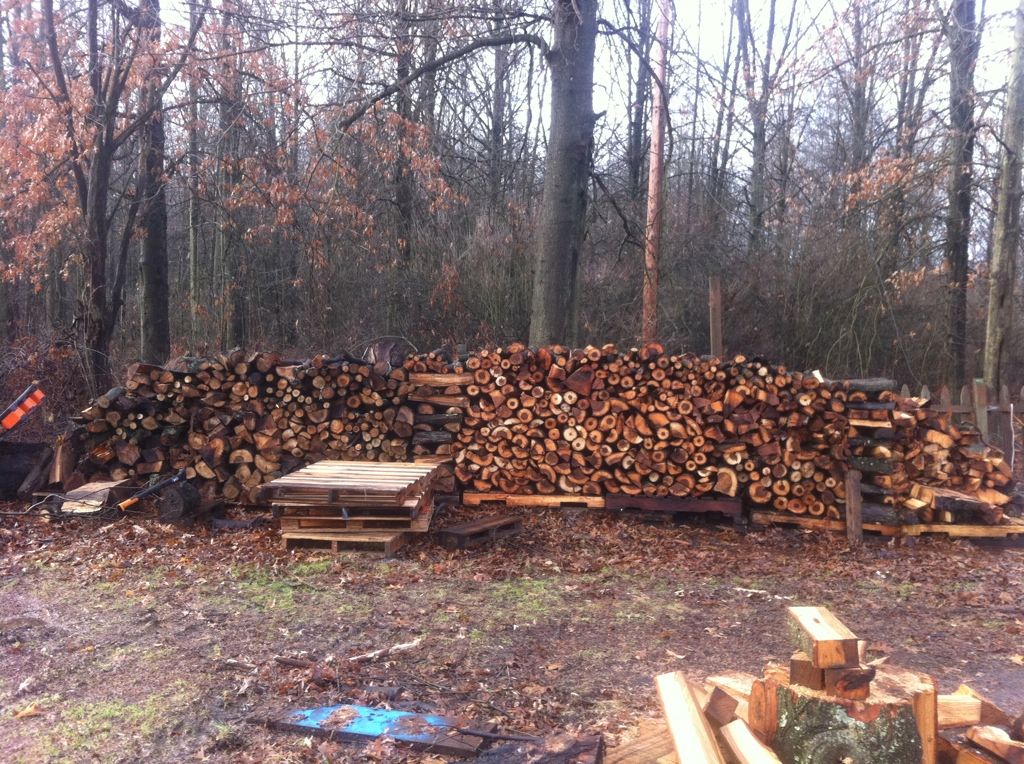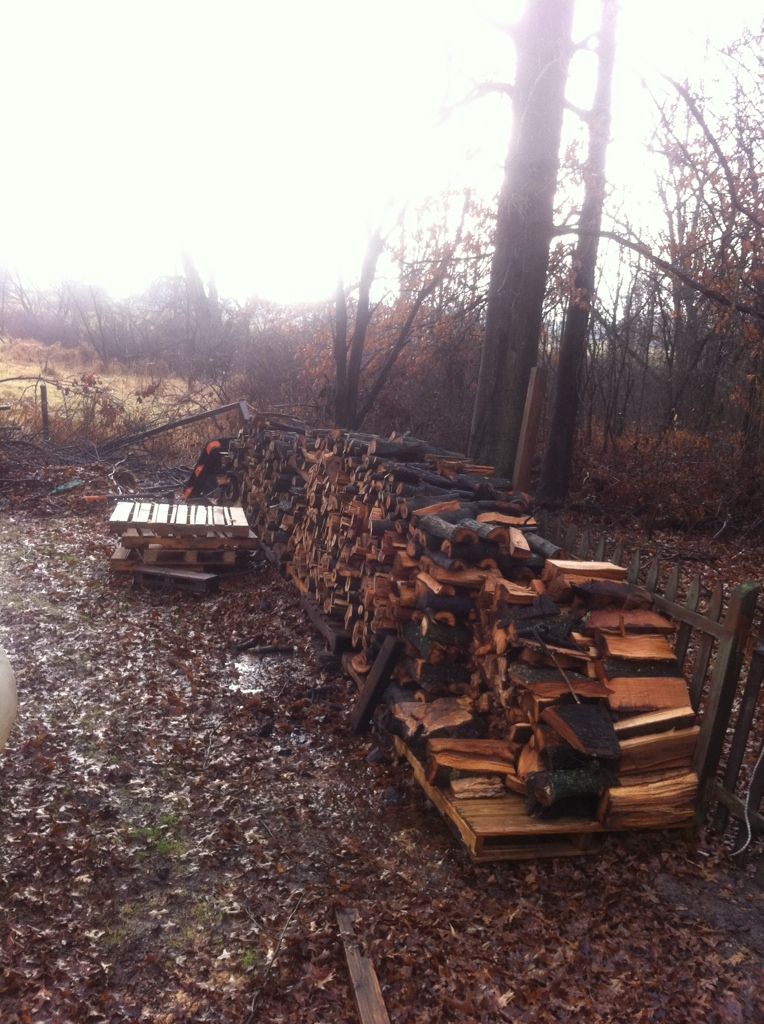FLHX Storm
ArboristSite Guru
- Joined
- Nov 24, 2012
- Messages
- 843
- Reaction score
- 201
I know I'm a bit green at this, but I have been reading up on the subject.
What I've found is if the firewood to be used for the heating season is if it's left uncovered in it's stack, it will likely be too wet to burn. Covering it with a tarp will help as long as the sides are left open for air flow. Closing up the sides will promote condensation and set back the drying process several months or more.
But, one thing I noticed in placing a tarp over the top, that there is still condensation that forms under the tarp which will migrate to the firewood. To put a stop to that, I placed a couple of sheets of roofing felt over the tops of the piles and then placed the tarp over those. I also went ahead and extended the tarp out about a foot on each side and used an old piece of conduit to keep the ends from draping down the sides and act as kind of an awning on a camping tent which keeps the rain off the sides of the pile. At the ends of the pile I secured each corner of the tarp with bungies so that as I remove some of the wood, it will still remain tight, at least for a while. But I have smaller bungies set off to the side when it becomes too loose.
The wood I have piled in racks on the porch can still get wet due to condensation from the roof of all things. When the porch was put together, no plywood sheeting was used so it's basically all tin with the exception of the 2x6's and purlins. I went ahead and put a tarp over the piles to help keep the condensation from the roof from dripping on the piles and instead of using bungies, I used some old window weights I found in the shed to hold the tarp in place using ball bungies to attach the weights.
I've only owned this place for 2 years now as of the 13th of this month and this is my first year of burning firewood in a wood stove so I guess y'all could say I'm getting a crash course in all of this just like I'm getting a crash course in just about everything I'm doing on the house and the rest of the property.
I had also converted the chimney from a Class B (for propane) over to a Class A using the rigid stainless steel liner (single wall) for in the chimney itself including the cleanout at the very bottom. Double wall from the stove to the chimney. But that's another topic all together for another time
If y'all have any additional suggestions for keeping firewood dry without a shelter, they would be appreciated.
What I've found is if the firewood to be used for the heating season is if it's left uncovered in it's stack, it will likely be too wet to burn. Covering it with a tarp will help as long as the sides are left open for air flow. Closing up the sides will promote condensation and set back the drying process several months or more.
But, one thing I noticed in placing a tarp over the top, that there is still condensation that forms under the tarp which will migrate to the firewood. To put a stop to that, I placed a couple of sheets of roofing felt over the tops of the piles and then placed the tarp over those. I also went ahead and extended the tarp out about a foot on each side and used an old piece of conduit to keep the ends from draping down the sides and act as kind of an awning on a camping tent which keeps the rain off the sides of the pile. At the ends of the pile I secured each corner of the tarp with bungies so that as I remove some of the wood, it will still remain tight, at least for a while. But I have smaller bungies set off to the side when it becomes too loose.
The wood I have piled in racks on the porch can still get wet due to condensation from the roof of all things. When the porch was put together, no plywood sheeting was used so it's basically all tin with the exception of the 2x6's and purlins. I went ahead and put a tarp over the piles to help keep the condensation from the roof from dripping on the piles and instead of using bungies, I used some old window weights I found in the shed to hold the tarp in place using ball bungies to attach the weights.
I've only owned this place for 2 years now as of the 13th of this month and this is my first year of burning firewood in a wood stove so I guess y'all could say I'm getting a crash course in all of this just like I'm getting a crash course in just about everything I'm doing on the house and the rest of the property.
I had also converted the chimney from a Class B (for propane) over to a Class A using the rigid stainless steel liner (single wall) for in the chimney itself including the cleanout at the very bottom. Double wall from the stove to the chimney. But that's another topic all together for another time
If y'all have any additional suggestions for keeping firewood dry without a shelter, they would be appreciated.

























































